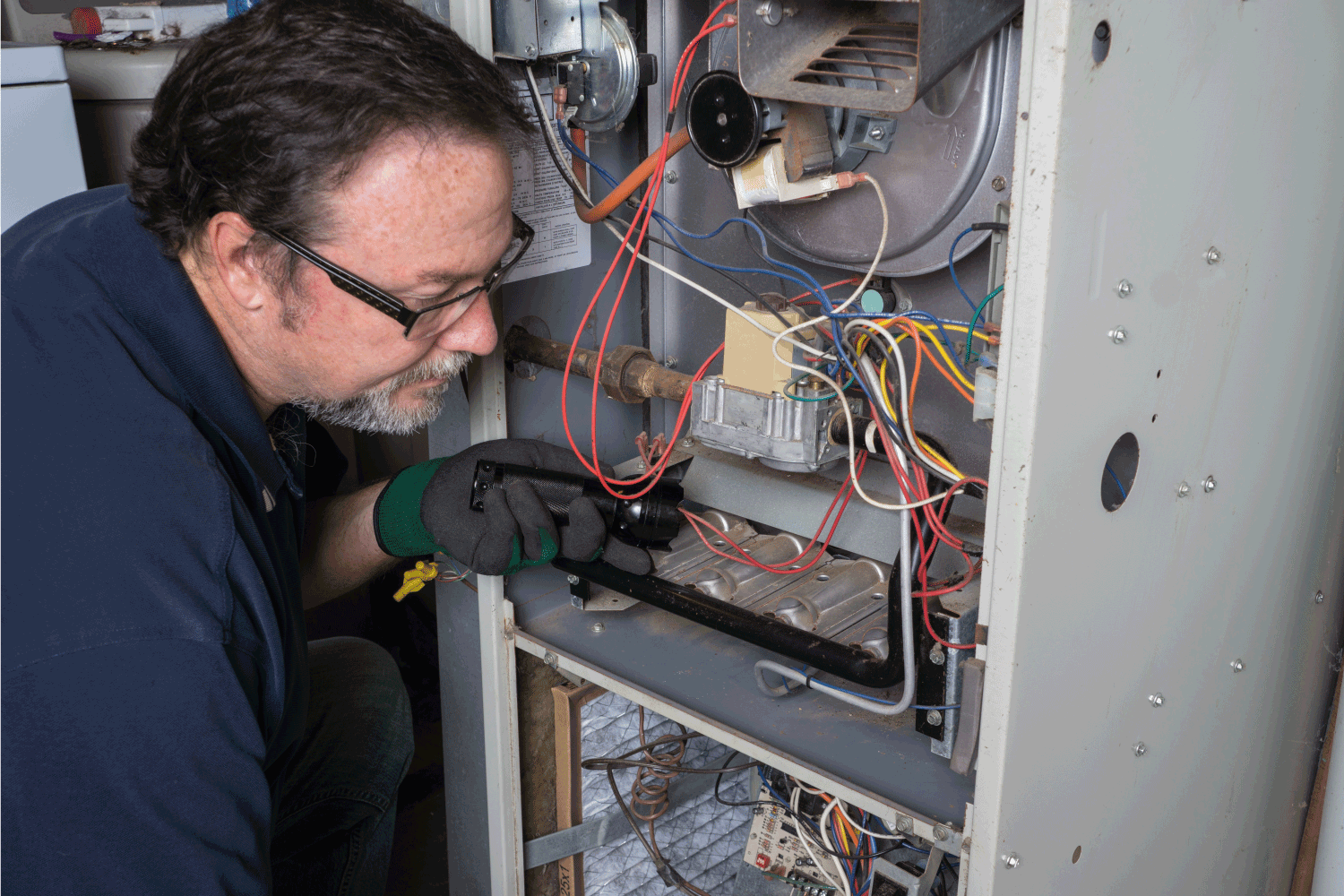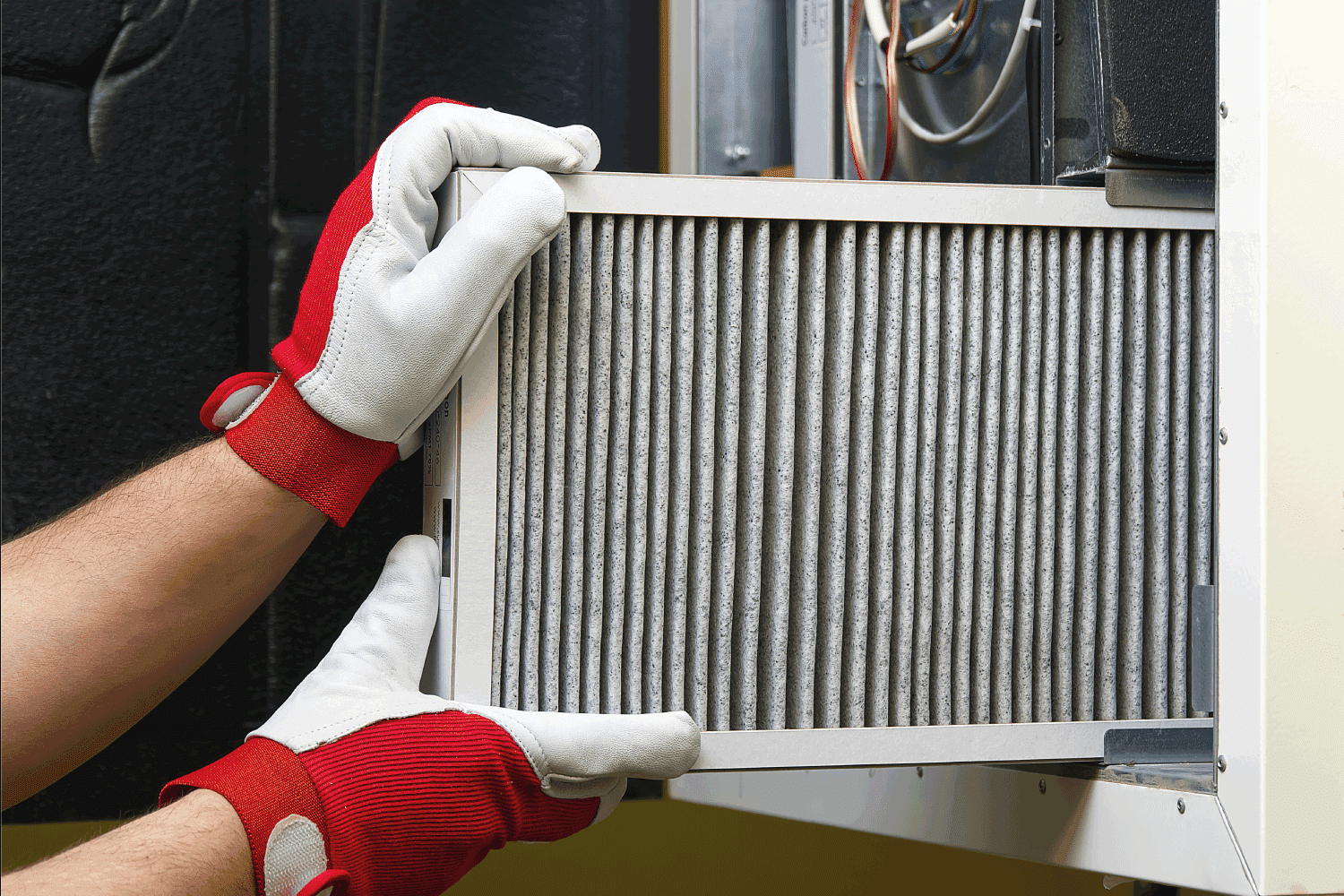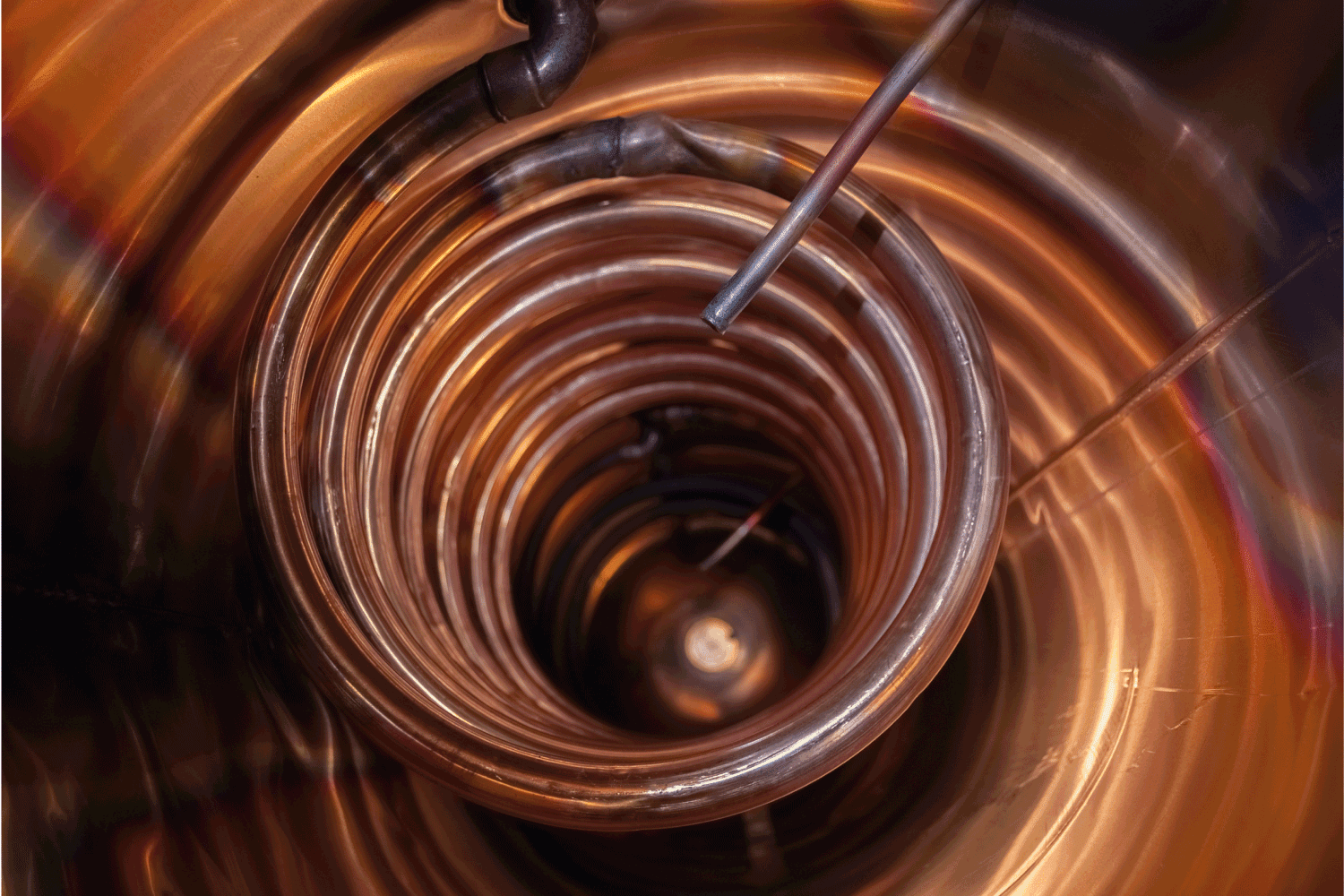Your Goodman furnace's heat exchanger plays a crucial part in the functionality of the furnace. And maintaining your furnace, regardless of the brand, is essential to its longevity and everyday operation. So how do you clean the heat exchanger on a Goodman furnace specifically? We've closely reviewed the cleaning method for a Goodman furnace to compile this answer for you.
Here are the steps to clean the heat exchanger on a Goodman furnace:
- Ensure that the power is off
- Remove gas connection
- Remove the front panel
- Clean the area around the exchanger with the wet/dry vac
- Scrub the tubes
- Reassemble the furnace
Keeping your furnace maintained throughout the year can help it last for years to come. A part of this maintenance includes cleaning the heat exchanger and surrounding parts. You can perform this task yourself or contract it out to an HVAC technician. Let's take a look at how to make it a DIY project.

Steps to Clean the Heat Exchanger on a Goodman Furnace
It's important to note that the specific steps to clean the heat exchanger may depend on the make and model of your furnace. However, here are the general steps to clean the exchanger on most gas-operated models.

Things you'll need:
- Wet/dry vacuum
- Stiff wire brush
1. Ensure that the power is off
First, make sure that the thermostat is set "Off" position. Also, turn off the furnace itself by switching the tab for the pilot light to the "Off" position.
2. Remove gas connection
Next, remove the gas supply line connected to the furnace. The supply line will typically be located on the right side of the furnace. If wires connect the line to the unit, you can remove them by twisting them and disengaging them momentarily.
3. Remove the front panel
Next, remove the front panel of the furnace by unscrewing the side screws. You can do this with a screwdriver or a pocket knife, as the screws are relatively short. After removing the screws, slide the panel up and pull it completely off of the furnace.
4. Clean the area around the exchanger with the wet/dry vac
Take the vacuum and run it along the floor of the exchanger area and the surrounding walls. Be sure to get inside all of the corners and crevices, as these are areas where debris normally accumulates.
5. Scrub the tubes
Take your stiff brush and remove any deposits on the inner or outer areas of the tubes, floor, and wall. If the tubes appear discovered or scaled, you may need to apply a bit of below grease to remove it.
Be sure to use the wet/dry vacuum to prevent the accumulation of debris inside the exchanger. Also, visually inspect the exchanger for any cracks, as this can cause it to fail in the near future.
6. Reassemble the furnace
After removing all of the debris from the exchanger, place the front panel back in position and re-attach the side screws. Next, plug the gas line back in and turn on the furnace to ensure that it's running properly after the cleaning.

Additional Cleaning To Perform
Replace the air filter
After cleaning your heat exchanger, there are a few other items that you should pay attention to. The first is the air filter.
Most gas-powered furnaces still require air filters that will need to be replaced every one to two months. Some special models may have non-disposable filters that can be cleaned instead of replaced.
To replace the air filter, simply slide it out of position and slide the new one into its place. Be sure to note where the arrow for the airflow is pointing so that you install the air filter in the right direction.
If you have a non-disposable air filter, you can clean it with soap and water. However, be sure that the air filter is completely dry before installing it back in the furnace.
Clean the Blower Fan
Before reassembling the furnace, it's a good idea also to clean the blower fan. You can start by using your wet dry vac to remove any dust and debris from around the fan's motor.
Next, take a small wire brush and go over the edges of the fan. A toothbrush will work as well. If there is any remaining dirt, you can use a slightly damp microfiber cloth to remove it.
The blower also has a belt that should be checked to ensure that it is neither too loose nor cracked. If the belt appears cracked, be sure to replace it
What is the function of a heat exchanger in a furnace?
The heat exchanger is the component that heats the air inside the furnace and delivers it to the ducts throughout the home. It is comprised of a row of tubes and coils and is usually found in the bottom center area of a furnace.
When the pilot light is lit on a furnace, the furnace will begin channeling hot combustion gases inside of the heat exchanger allowing the heat to be distributed and moved to the vents.
The return ducts will suck and cold air from your home and pass it along throughout the heat exchanger so that it can be heated. Once the walls around the heat exchanger are heated up, the warm air is then transferred to the rooms of your home via the ducts.
How often should a heat exchanger be cleaned?
Ideally, a heat exchanger should be cleaned at least once a year. This falls in line with the annual maintenance typically recommended by HVAC technicians. Maintenance services can range anywhere from $150 to $250, depending on the make and model of your furnace.
How do I know if my heat exchanger is clogged?
A clogged heat exchanger will show signs of malfunction before it ultimately burns out. This is why it's important to recognize the signs so that you can troubleshoot, repair, or replace the exchanger as soon as possible.
The condensate drain pan shows black or brown liquid
A dirty drain pan is one of the most obvious signs of a clogged air filter. This means that the condensate is full of dirt and debris from corroded polypropylene or soot. In any event, the heat exchanger and the drain pan will need to be cleaned.
The carbon monoxide alarm goes off
Another sign is when the carbon monoxide alarm goes off. A clogged exchanger will cause the combustion gases to make their way throughout the ducts and into various areas of your home--which is hazardous.
If your furnace is located in the attic or the basement of your home, be sure that the batteries for the carbon monoxide alarm or kept up-to-date.
A strong, pungent odor around the furnace
Sometimes you may also notice a smell throughout the home, and other times you may only notice it when you are in the room in which the furnace is located. To confirm the issue, try standing outside next to the exhaust fan for the furnace to see if the smell is stronger near it. If it is, it's an indication that your heat exchanger is clogged.
Leaking water around the furnace
If the furnace has water leaking around the condensate drain, it's possible that it has a secondary heat exchanger that is clogged up. When this happens, the condensate will be prevented from reaching the drain, causing it to leak out in other places.

How long does a furnace heat exchanger last?
The heat exchanger will typically last for the life of the furnace, which can be anywhere from 10 to 15 years or more. Of course, the better you maintain your furnace, the longer it's likely to last. Here are the best ways to maintain your furnace and ensure the longevity of your exchanger.
Reduce moisture levels
It's not uncommon to find homeowners with dehumidifiers located or attached to their furnaces. This is because high moisture levels will cause the heat exchanger to develop rust and ultimately reduce its life span. If possible, try to keep the humidity levels in your home and the areas around your furnace at about 50-60%.
Change the air filter regularly
Staying on top of air filter changes is another way to help preserve the heat exchanger. A clogged air filter can cause the furnace to overheat and will make the exchange of work harder.
Clean the A/C coil
When running the air conditioner for your home, pay attention to the coils around the unit. Include their cleaning in your annual maintenance payment, as the coils can cause the heat exchanger to rust from leaking condensation.
Wrapping Things Up
Cleaning your heat exchanger should be a part of your regular furnace maintenance plan. If you don't clean the exchange yourself, be sure to have a technician come out to clean it and inspect it to ensure that it's running correctly.
Before you go, be sure to check out some of our other posts:
